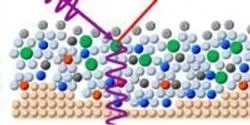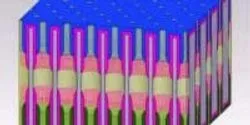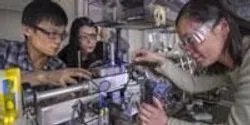batteries

From new insights into the building blocks of matter to advances in understanding batteries, superconductors, and a protein that could help fight cancer, 2014 was a year of stunning successes for the U.S. Department of Energy's Brookhaven National Laboratory. Oh, and did we mention the opening of a brand new facility that will push the limits of discovery across the scientific spectrum? For details on these and the rest of our Top-10 breakthroughs, check out the items below. You can follow Brookhaven Lab on Facebook, Twitter, and Tumblr to learn about the discoveries of 2015 as they happen.

In the race to find materials of ever increasing thinness, surface area and conductivity to make better performing battery electrodes, a lump of clay might have just taken the lead. Materials scientists from Drexel University’s College of Engineering invented the clay, which is both highly conductive and can easily be molded into a variety of shapes and sizes. It represents a turn away from the rather complicated and costly processing—currently used to make materials for lithium-ion batteries and supercapacitors—and toward one that looks a bit like rolling out cookie dough with results that are even sweeter from an energy storage standpoint.

New X-ray spectroscopy technique at Berkeley Lab’s Advanced Light Source for the study of heterogeneous interfaces.

Researchers at the University of Maryland have invented a single tiny structure that includes all the components of a battery that they say could bring about the ultimate miniaturization of energy storage components.

Pity the poor lithium ion. Drawn relentlessly by its electrical charge, it surges from anode to cathode and back again, shouldering its way through an elaborate molecular obstacle course. This journey is essential to powering everything from cell phones to cordless power tools. Yet, no one really understands what goes on at the atomic scale as lithium ion batteries are used and recharged, over and over again.

Using a new method to track the electrochemical reactions in a common electric vehicle battery material under operating conditions, scientists at the U.S. Department of Energy's Brookhaven National Laboratory have revealed new insight into why fast charging inhibits this material's performance.












